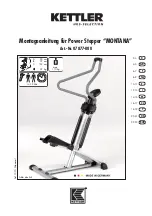Husqvarna Viking Huskystar E20, User Manual
The Husqvarna Viking Huskystar E20 is a versatile sewing machine that guarantees stunning results in your creations. To get the most out of your machine, make sure to download and utilize the free User Manual available at manualshive.com. This comprehensive manual guides you through all the features and functions for an enjoyable sewing experience.

















